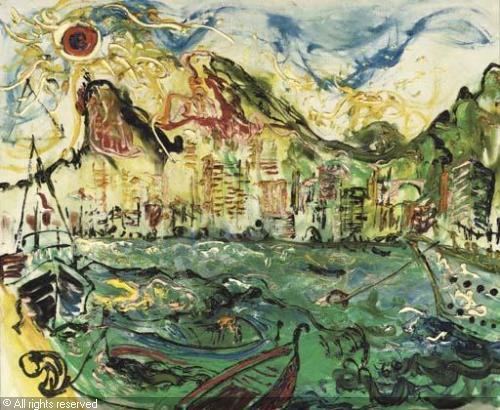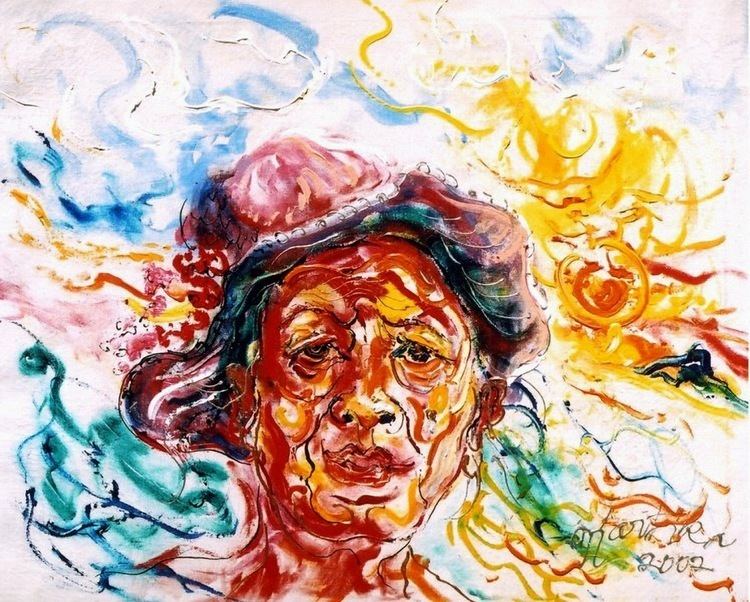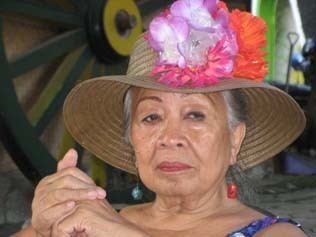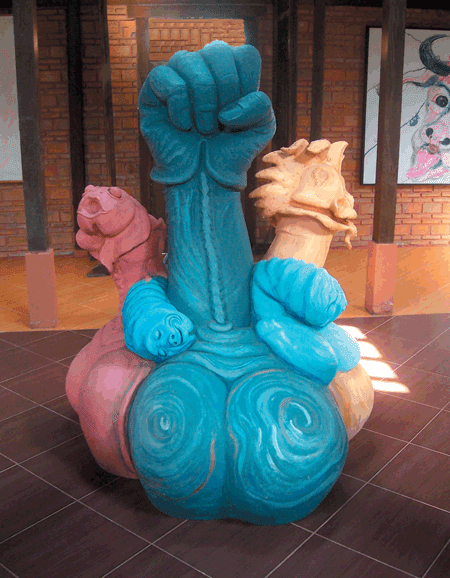Occupation Painter Grandparents Ladjem Parents Affandi | Role Artist Name Kartika Affandi-Koberl | |
 | ||
Born November 27, 1934 (age 90) ( 1934-11-27 ) Jakarta, Indonesia | ||
Kartika Affandi-Koberl (born November 27, 1934), is an Indonesian artist born into a family of artists.
Contents

Biography

Kartika Affandi-Koberl was born in Jakarta in 1934. She is the daughter of Affandi and Maryati, who were both artists. Affandi married Saptohoedojo in 1952. She had eight children. Affandi's relationship with her husband was strained by his polygamy and also his stinginess with the paint they shared. In 2001, she and Koberl divorced.
Artistic career

From the age of seven, Kartika was instructed by Affandi in how to paint with fingers and tubes directly on the canvas. Any mixing of colours is done on her hands and wrists. Kartika has no permanent studio; like Affandi, she prefers to paint outside in the village environment where she interacts directly with her subjects and on-lookers. This contrasts with most contemporary Indonesian painters, who work in their studios from mind-images, memory, photographs or sketches.
In a modern art world born in 1930s, in which men were still the predominant actors, Kartika is one of a small group of women who from the mid-1980s have succeeded in exhibiting their work on a regular basis and in gaining limited critical recognition. Even in this context, Kartika's art emerges as unique, ranging as it does from conventional to subversive.
In a culture where the individual self rarely is put to the fore, Kartika had made the self-portrait one of her main themes. In a society where emotion is suppressed, both publicly and privately, Kartika fills her canvases with intense feeling. In culture where genitals are considered taboo in representation, Kartika has painted her own nudity graphically and without the prescribed, distancing sweetness, never depicting the body as an object of pleasure, whether that of others or her own.
Not surprisingly given their close bond, Kartika has painted numerous penetrating portraits of her father, right through the last years of debilitating illness at the end of his life. Another provocative portrait, Hindu Priest, shows an old man, close up, as he walks on a beach. His face is preoccupied, intense - a face that might have been taken from an Ingmar Bergman movie. There is nothing here of the glamour, romance or mystical aura that so often characterises images from Bali such as in O.H. Supono's Balinese Priest.
Focus
Following in the populist footsteps of Affandi, Kartika also has a long history of painting rural and dispossessed people such as fishermen, farmers, workers and beggars. Since these individuals pose while interacting with her and exchanging life histories as she paints, these must be considered portraits. Although narrative, her paintings when viewed close up dissolve into strong, abstract statements in energetically applied impasto oils. Kartika's work ranges from the sweet and idyllic to an expressive realism that can be harsh. The latter is evident in her paintings of beggars, handicapped people and suffering animals and in her uncompromising depiction of the progress of old age, whether painting a stranger, her father, or herself.
The second beginning in Kartika's artist career occurred around 1980, when she studied painting restoration in Austria to enable her to repair Affandi's deteriorating paintings. Here, solitude and reflection paved the way for her most unusual portraits.
Travels and exhibitions
Kartika travelled to Australia in the 1990s and also to the United States .
Her work was being appraised in the mid 1990s
Her work was exhibited in the mid 2000s and she reflected upon her career and art at that time as well
Paintings were being exhibited in the 2010s
